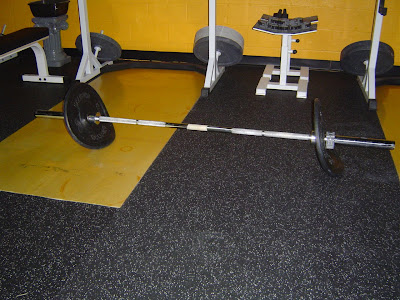Epic FAIL

 If your barbell EVER looks like this, you FAIL. Learn how to load the bar. Learn how to take care of the equipment in your gym. Get some Hitechplates (the most excellent gray and white plates on the squat racks behind the bar) if you need to train with < 95 lbs from the floor.
If your barbell EVER looks like this, you FAIL. Learn how to load the bar. Learn how to take care of the equipment in your gym. Get some Hitechplates (the most excellent gray and white plates on the squat racks behind the bar) if you need to train with < 95 lbs from the floor.

Comments
Can you explain exactly how this bar was loaded incorrectly? It looks like the collars aren't snug enough against the weights or is this just crappy training plates that warp (or both)?
Alex
If you are going to repeatedly lift < 40 kg from the ground, you should use good 5 kg and 2.5 kg training plates (Hitechplates, Eleiko, Werksan) that hug the collars of the bar and support the weight of the bar when it is on the ground. Good training plates allow the bar to sit evenly on the ground for lift off. The rubber 10 lb plates/plastic 5 lb plates are not structurally sound enough to support the weight of the bar. This is is especially true of the weight is going to be repeatedly dropped or left overnight on the bar. This will eventually destroy the skinny 10 lb/5 lb plates.
Other than that, proper loading of the bar means the heaviest bumper/iron plates are always loaded first, then the lighter iron plates are added in sequential order, with the number side facing out. Weight should always be stripped from the barbell after use.